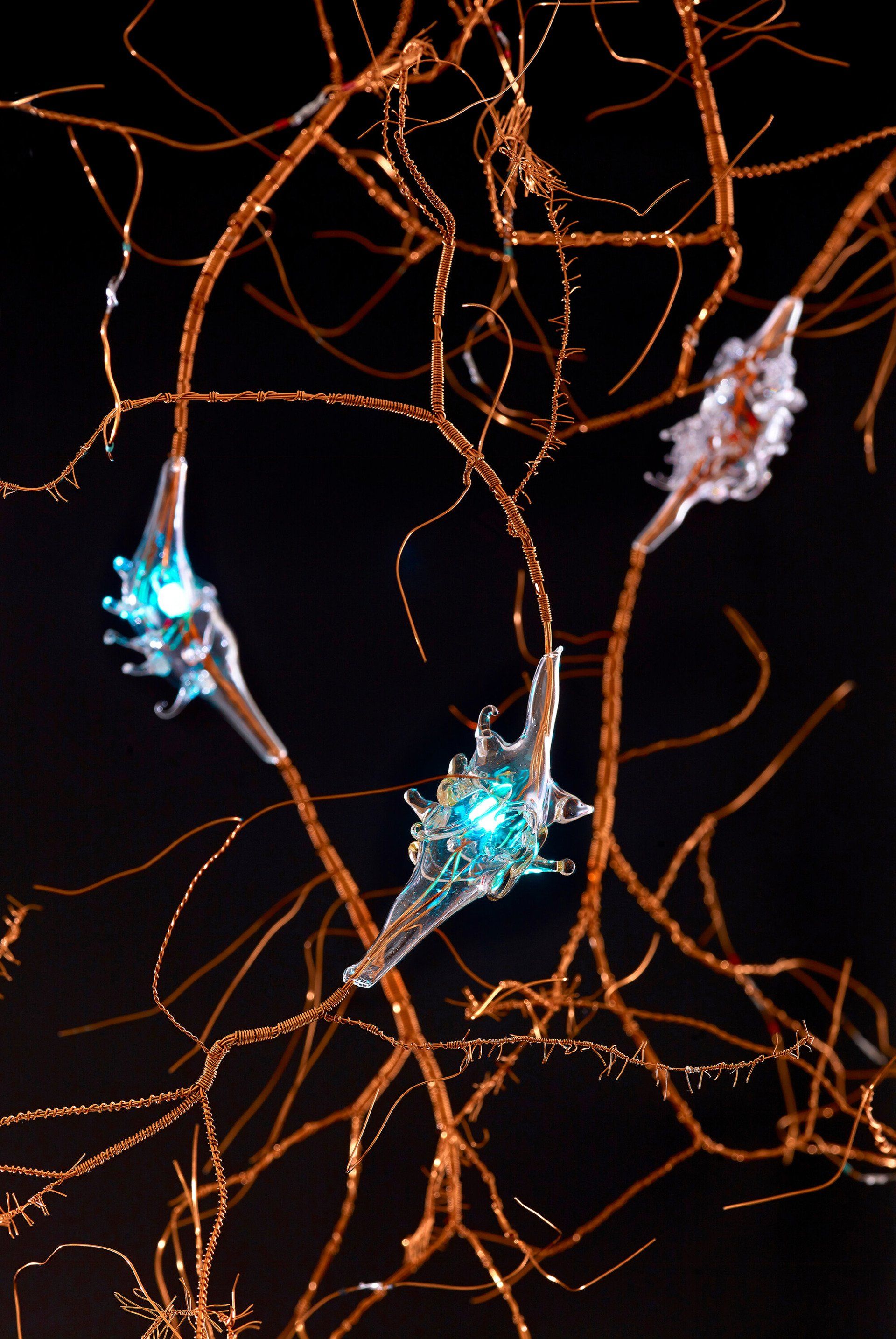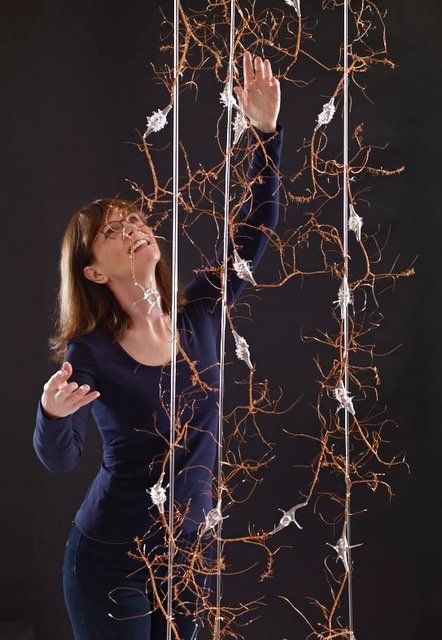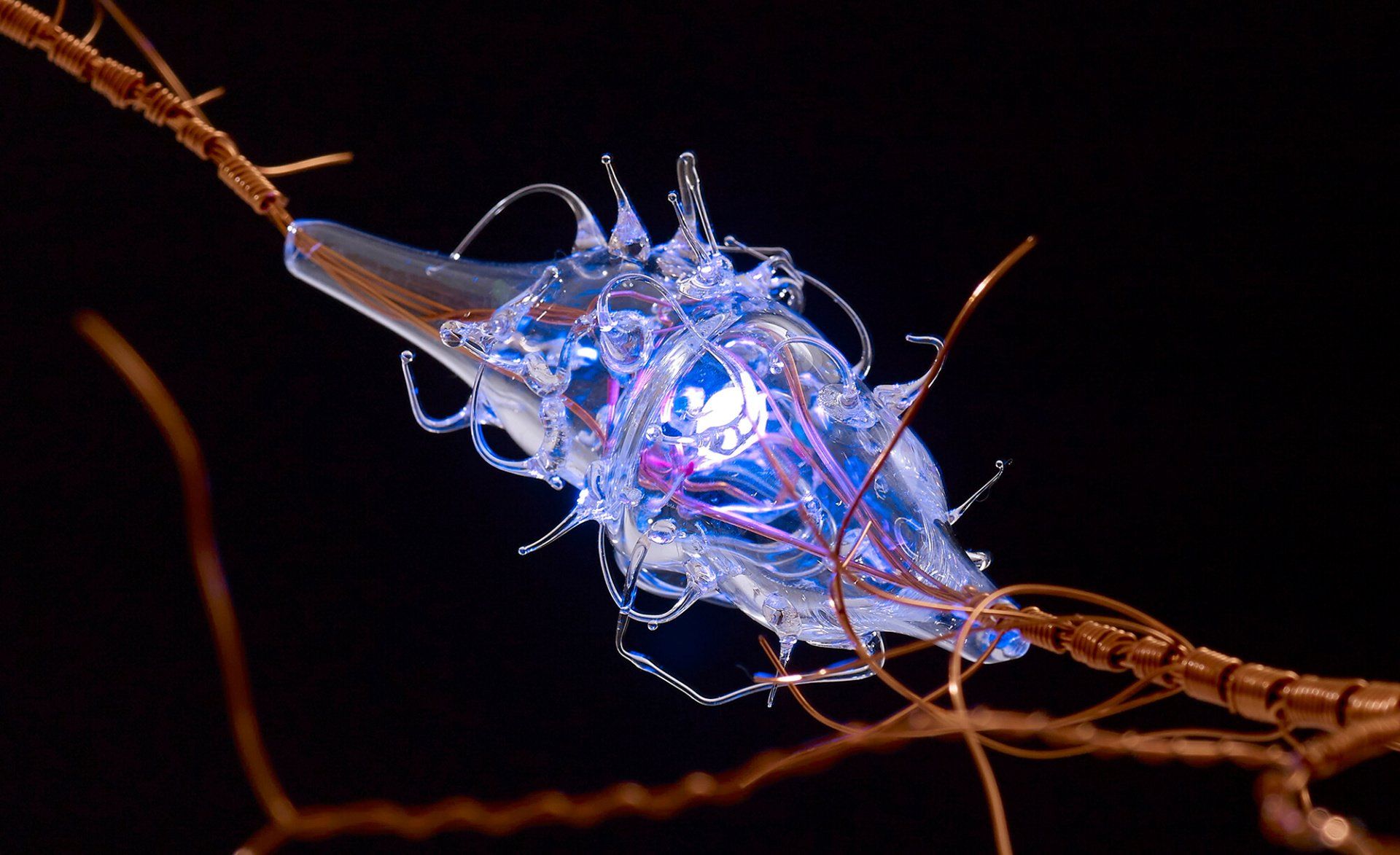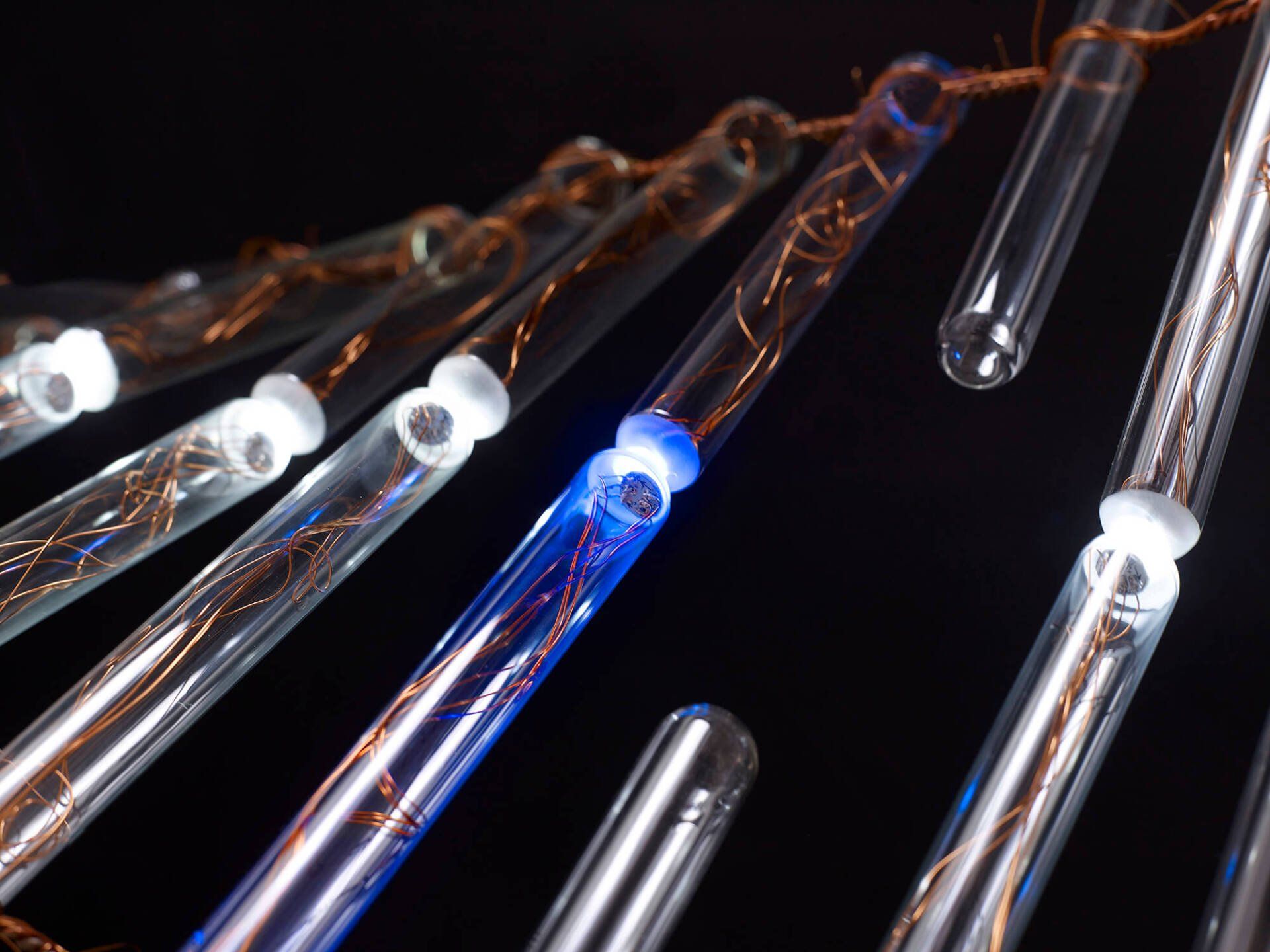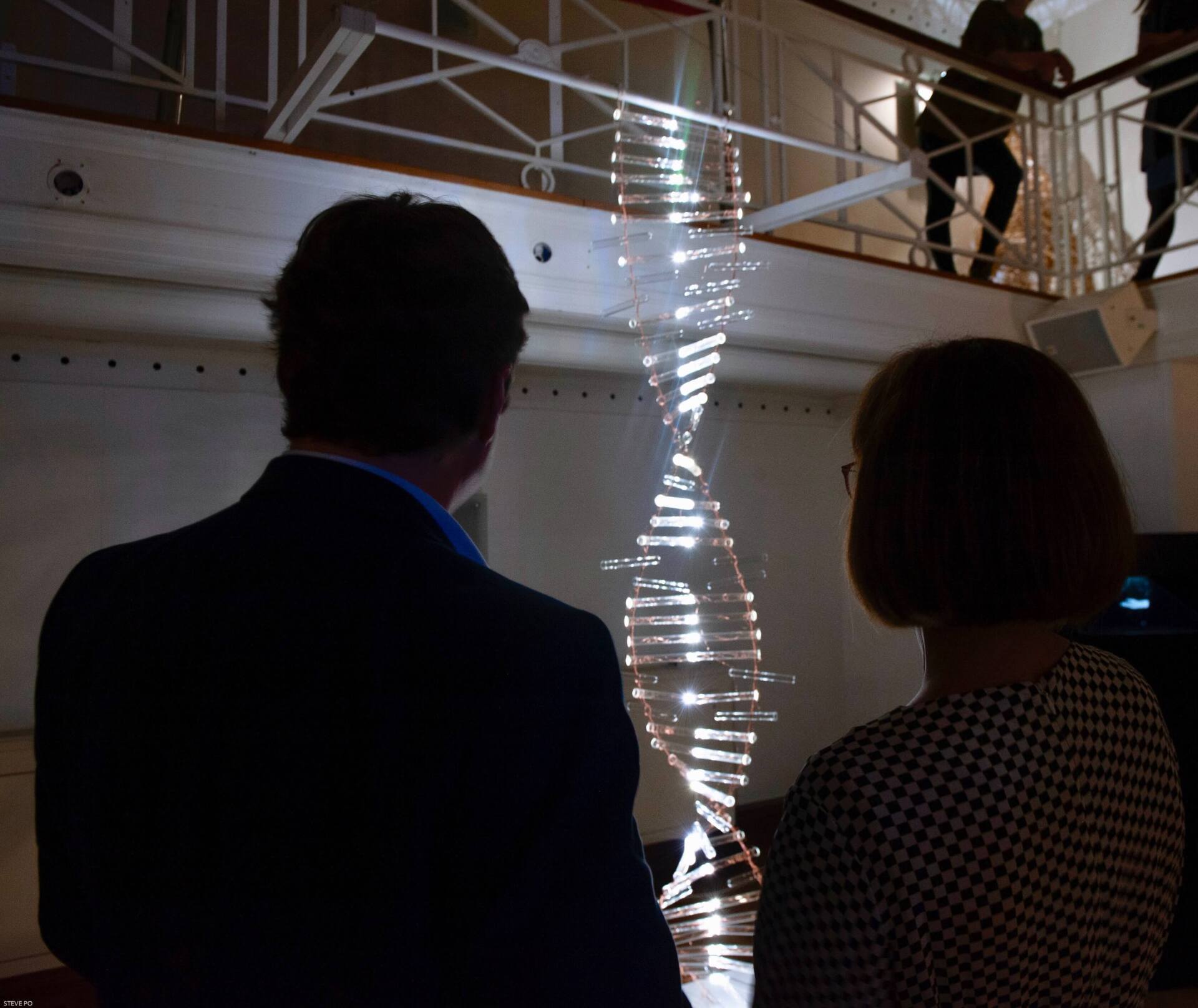KEY PROJECTS
View award-winning glass work projects that have been created by Jenny Walsh in collaboration with leading scientists to explore how glass, light, science and technology combine.
KEY PROJECTS
Line of Sight
In collaboration with Dr Eirinn Mackay.
Line of Sight is inspired by the primary visual cortex; neurons selectively fire, based on visual features seen by the retina, for example, horizontal or vertical shapes or movement. As the viewer interacts with Line of Sight, they begin to realise that by adapting their movements, different columns of neurons fire up, encouraging them to adjust their behaviour accordingly.
Line of Sight is exhibited at the Sainsbury Wellcome Centre for Neural Circuits and Behaviour
https://www.sainsburywellcome.org/web/.
The Sainsbury Wellcome Centre (SWC) brings together world-leading neuroscientists to generate theories about how neural circuits in the brain give rise to the fundamental processes underpinning behaviour, including perception, memory, expectation, decisions, cognition, volition and action. Funded by the Gatsby Charitable Foundation and Wellcome, SWC is located within UCL and is closely associated with the Faculties of Life Sciences and Brain Sciences.
Our research on the primary visual cortex led us to neuroscientists Hubel and Wiesel who were awarded the Nobel Prize in 1981 for their work on the cortex of cats, in which they found that certain cortical cells increased their firing rate when a horizontal line moved into the cats field, while other cortical cells fire in response to vertical or diagonal lines. This same process occurs in other animals, as demonstrated by Peter Ewart’s work with toads; helping them to identify prey and adapt their behaviour accordingly.
Fractured Helix
Fractured Helix is inspired by light’s interaction with the building blocks of life DNA. Ultraviolet light destroys the links in DNA’s structure, changing the cells in our bodies. The matching base pair molecules that make up the links are super sensitive to UV light; they react with the UV light photons, causing them to alter their properties and disrupt the strand. Within Fractured Helix the links between the strands are represented by test tubes, a familiar sight in any biological science lab. The light sequence reflects the active matching base pair molecules, which are the instructions that cells use to make us who we are. The detached unlit test tubes represent the base pair molecules damaged permanently by UV light, changing the inner workings of the cell.
With thanks to Brian Sutton, Professor of Molecular Biophysics at Kings College London and Dr Luke Nicholls, Photonics and Nanotechnology KCL.
Fractured Helix was exhibited at Anatomy Museum
Kings College London and curated by the Institute of Light Technologies
May 2019.
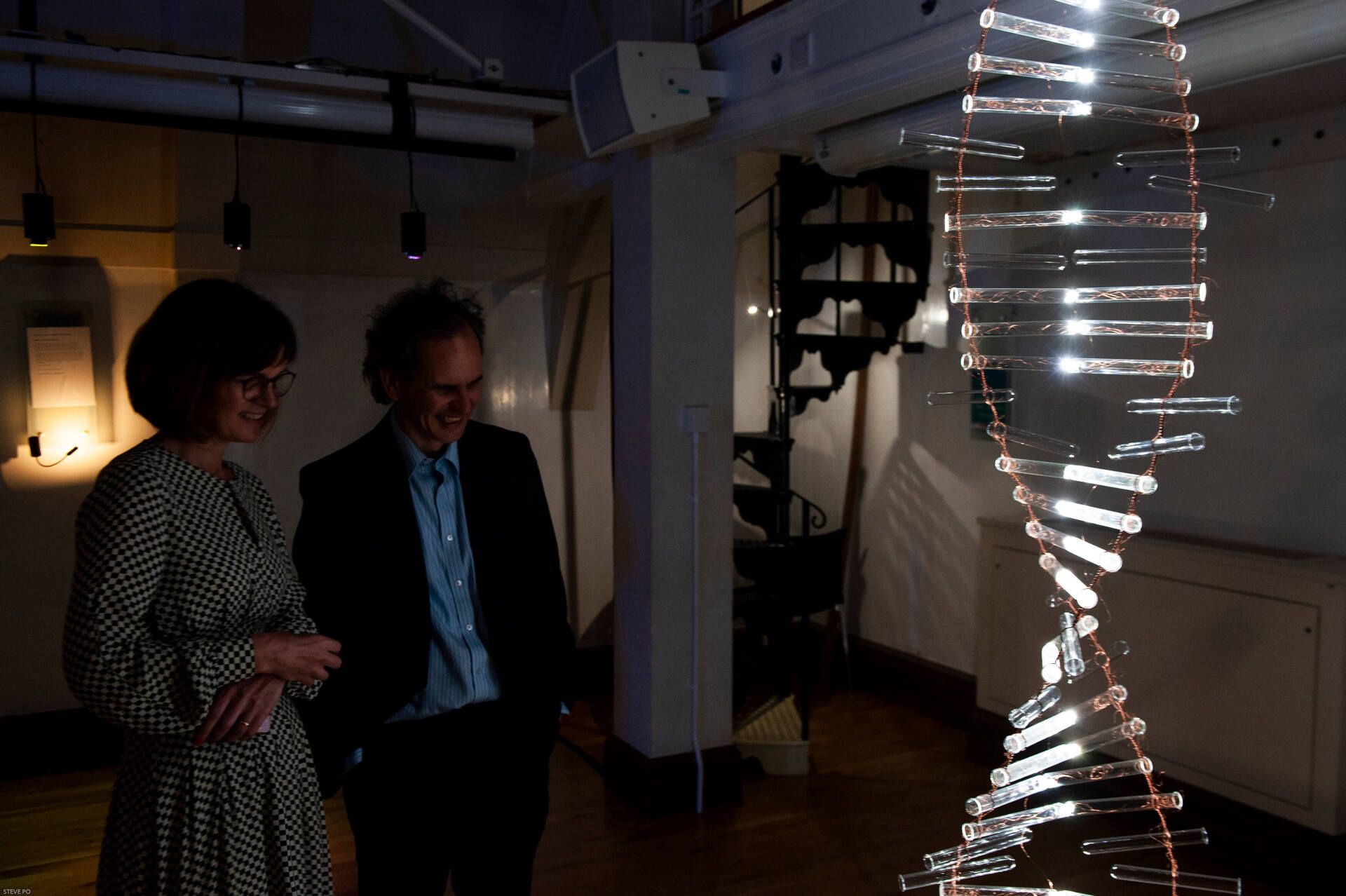
Photography by Steve Po
Action Potential
Is an interactive sculpture that reflects the human body’s neural pathways. The light sequence represents the neural impulses, a cascade of information that travels through the body. The work is informed by the historical influence of glass in scientific innovation and the role of electricity in re-stimulating neural pathways.
The sculpture combines the inert and insulating properties of glass with the conducting properties of copper, used in some electrical interfaces, to augment and enhance the body’s functions. Action Potential is dynamic – viewers are invited to approach the sculpture and activate the light pathways.
This work was made in collaboration with Jeremy Keenan, technician and Devereux & Huskie glassworks
Action Potential was exhibited at the Institute of Behavioural Neuroscience, University College London.
SPIN GLASS
STATE OF FLUX
The test tube could be seen as a symbol of science; used everyday in research laboratories to advance medical science. At the Stem Cell Institute in Cambridge, Professor Ludovic Vallier’s research team are investigating the ideal conditions necessary to transform stem cells into endoderm cells, constantly refining the growing conditions to optimise cell growth.
Many of these experimental discoveries occur within a test tube. Inspired by Professor Ludovic Vallier’s research. Jenny Walsh conducted a series of experiments to determine the ideal conditions required to alter the test tube shape, creating a colony of cellular shapes at various stages of differentiation.
State of Flux
was exhibited at Exchanges, Cambridge in 2017 and State of Flux (detail) was exhibited at Infinite Potentials
14th June – 14th July 2018, SciArt Centre exhibition at ArtCell, Cambridge in collaboration with Cambridge Stem Cell Institute.
8th Sept 2018 - 13th Jan 2019 Infinite Potentials, SciArt Centre exhibition at New York Hall of Science, New York City, in collaboration with the Cambridge Stem Cell Institute.
VIEW ARTWORKS
